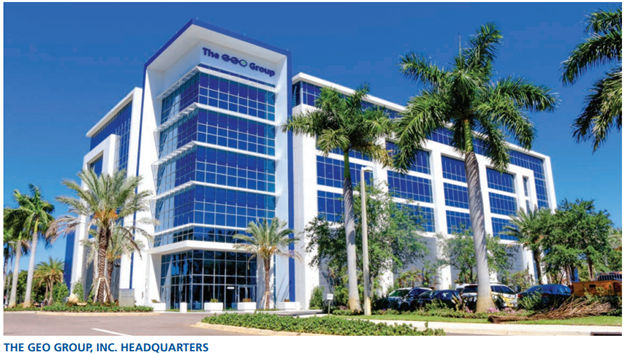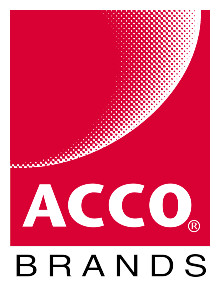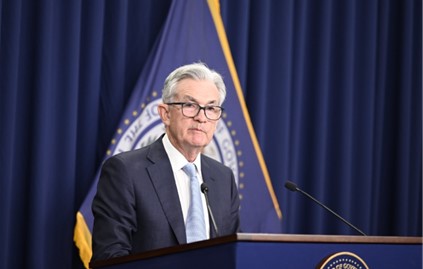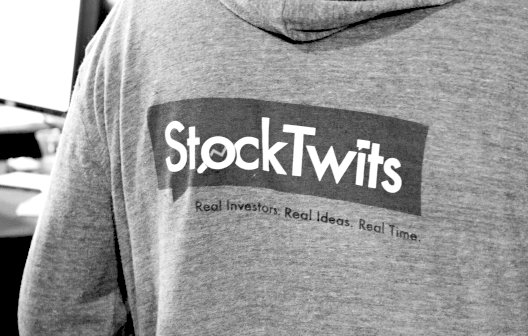
Cocrystal Pharma Reports Second Quarter 2022 Financial Results and Provides Updates on its Antiviral Development Programs
Research, News, and Market Data on Cocrystal Pharma
- Planned Phase 2a study design with orally administered CC-42344 for the treatment of pandemic and seasonal influenza A
- Reported pharmacokinetic (PK) data from the single ascending dose portion of its Phase 1 study with CC-42344 supporting once-daily dosing
- Collaborated with the National Institute of Allergy and Infectious Diseases (NIAID) to evaluate the potential of the Company’s COVID-19 protease inhibitors and subsequently expanded the collaboration to support a scale-up synthesis of these inhibitors
- Initiated API (Active Pharmaceutical Ingredient) synthesis and process chemistry development with the goal in 2022 of initiating two Phase 1 healthy volunteer studies evaluating intranasal and oral protease inhibitors for COVID-19
BOTHELL, Wash., Aug.
15, 2022 (GLOBE NEWSWIRE) — Cocrystal Pharma, Inc. (Nasdaq: COCP) reports financial results for the three and six months ended June 30, 2022, and provides updates on its antiviral pipeline, upcoming milestones and business activities.
“This quarter we advanced our compounds in the clinic and announced a significant research collaboration. We were excited to announce the design of our Phase 2a human challenge study with our oral PB2 inhibitor CC-42344, enabling us to quickly evaluate antiviral efficacy and tolerability of influenza-infected healthy volunteers. Human influenza challenge studies have proven important in advancing the development of approved influenza antivirals. Additionally, due to the small sample size, a human challenge study can be completed quickly,” said Sam Lee, Ph.D., President and co-interim CEO of Cocrystal. “Later this year we expect to report results from our Phase 1 study in healthy volunteers that is underway in Australia. Our plan is to then file with the UK regulatory agency in early 2023 to proceed with the Phase 2a study.
“We have initiated API synthesis and process chemistry development with our novel, broad-spectrum COVID-19 intranasal/pulmonary and oral protease inhibitors, as we prepare data to support Investigational New Drug (IND) applications with the goal of initiating two Phase 1 healthy volunteer studies evaluating these inhibitors for COVID-19 this year,” he added.
“We continue to be well positioned to execute on our clinical and regulatory goals given our clean capital structure, cost-efficient business model and a cash balance we believe is sufficient to fund planned operations into 2024,” said James Martin, CFO and co-interim CEO. “We chose to conduct the Phase 2a influenza A trial with PB2 inhibitor CC-42344 in the UK due to the efficiency and data we expect from a human challenge model, as opposed to a traditional clinical trial model. Under the human challenge model healthy adults will be deliberately infected with influenza virus under carefully controlled conditions, which we believe will hasten trial enrollment and ensure subjects are infected with influenza A. Our niche contract research partner, Open Orphan, is one of the premier specialists in providing this unique clinical model.”
Antiviral Pipeline Overview
Many antiviral drugs are effective only against certain strains of a virus and are less effective or not effective at all against other strains or variants. Cocrystal is developing drug candidates that specifically target proteins involved in viral replication. Despite the numerous strains that may exist or emerge, these enzymes are required for viral replication and are essentially similar (highly conserved) across all strains. By targeting these highly conserved regions of the replication enzymes, our antiviral compounds are designed and tested to be effective against major virus strains.
COVID-19 and Other Coronavirus Programs
By targeting viral replication enzymes and protease, we believe it is possible to develop an effective treatment for all coronavirus diseases including COVID-19, Severe Acute Respiratory Syndrome (SARS) and Middle East Respiratory Syndrome (MERS). Our main SARS-CoV-2 protease inhibitors showed potent in
vitro pan-viral activity against common human coronaviruses, rhinoviruses and respiratory enteroviruses that cause the common cold, as well as against noroviruses that can cause symptoms of acute gastroenteritis.
In April 2022 we announced a collaboration with the NIAID to evaluate the potential of our COVID-19 3CL protease inhibitors for the treatment of COVID-19, with the NIAID responsible for in vitro and in
vivo studies evaluating the antiviral activity of the compounds. In June 2022 we expanded this collaboration by providing our proprietary process chemistry information for oral 3CL protease inhibitors to the NIAID to support scale-up synthesis of a key intermediate of these compounds.
- Intranasal/Pulmonary Protease
Inhibitor CDI-45205
- CDI-45205 is our novel SARS-CoV-2 3CL (main) protease inhibitor being developed as a potential treatment for COVID-19 and its variants.
- We have initiated scale-up synthesis and process chemistry development with CDI-45205 as we generate data to support an IND application with the goal of progressing to a first-in-human clinical trial in 2022.
- We received guidance from the FDA regarding further preclinical and clinical development of CDI-45205 that provides a clearer pathway for the Phase 1 study we plan to initiate in 2022, as well as directives for designing a subsequent Phase 2 study.
- CDI-45205 and several analogs showed potent in vitro activity against the SARS-CoV-2 Omicron (Botswana and South Africa/BA.1), Delta (India/B.1.617.2), Gamma (Brazil/P.1), Alpha (United Kingdom/B.1.1.7) and Beta (South Africa/B.1.351) variants, surpassing the activity observed with the original wild-type (Wuhan) strain.
- CDI-45205 demonstrated good bioavailability in mouse and rat PK studies via intraperitoneal injection, and no cytotoxicity against a variety of human cell lines. CDI-45205 also demonstrated a strong synergistic effect with the FDA-approved COVID-19 medicine remdesivir.
- CDI-45205 was among the broad-spectrum viral protease inhibitors obtained from Kansas State University Research Foundation (KSURF) under an exclusive license agreement announced in April 2020. We believe the protease inhibitors obtained from KSURF have the ability to inhibit the inactive SARS-CoV-2 polymerase replication enzymes into an active form.
- Oral Protease Inhibitors
- We are investigating novel antiviral drug candidates CDI-988 and CDI-873 for development as potential oral treatments for SARS-CoV-2. Both candidates were designed and developed using our proprietary structure-based drug discovery platform technology. These agents are chemically differentiated and exhibit superior in vitro potency against SARS-CoV-2, with activity maintained against current variants of concern. Both candidates demonstrated a favorable safety profile and PK properties that are supportive of daily dosing.
- Our goal is to initiate a Phase 1 study in 2022 with one of these candidates. We believe the FDA’s guidance for further development of CDI-45205 provides us with a clearer pathway for the clinical development of our oral COVID-19 program.
- Replication Inhibitors
- We are using our proprietary structure-based drug discovery platform technology to discover replication inhibitors as orally administered therapeutic and prophylactic treatments for SARS-CoV-2. Replication inhibitors hold potential to work with protease inhibitors in a combination therapy regimen.
Influenza Programs
Influenza is a severe respiratory illness caused by either the influenza A or B virus that results in outbreaks of disease mainly during the winter months. According to a report published by Precision Reports in June 2022, the global influenza therapeutics market is projected to reach $9.5 billion by 2027, from $6.6 billion in 2020, growing at a 4.8% CAGR between 2021 and 2027.
- Pandemic and Seasonal Influenza
A
- A novel PB2 inhibitor, CC-42344 has shown excellent antiviral activity against influenza A strains including pandemic and seasonal strains, as well as strains resistant to Tamiflu® and Xofluza
®. CC-42344 also has favorable PK and drug-resistance profiles.
- In March 2022 we initiated enrollment in our Phase 1 study with orally administered
CC-42344 in healthy adults. This randomized, double-controlled, dose-escalating study is designed to assess the safety, tolerability and pharmacokinetics of CC-42344.
- In April 2022 we announced preliminary data from our Phase 1 study with CC-42344, demonstrating a favorable safety and PK profile in the first two cohorts administered single ascending doses of 100 mg and 200 mg.
- In July 2022 we announced completion of the single ascending dose portion of the Phase 1 study and reported that PK results from this portion of the study support once-daily dosing.
- We expect to report full results from the Phase 1 clinical study in 2022.
- We entered into an agreement with a clinical research organization to conduct a human challenge Phase 2a study evaluating safety, viral and clinical measures in influenza A-infected subjects. The study is expected to be initiated in the second half of 2023.
- Pandemic and Seasonal Influenza
A/B program
- In January 2019 we entered into an Exclusive License and Research Collaboration Agreement with Merck Sharp & Dohme Corp. (“Merck”) to discover and develop certain proprietary influenza antiviral agents that are effective against both influenza A and B strains. This agreement includes milestone payments of up to $156 million plus royalties on sales of products discovered under the agreement.
- In January 2021 we announced completion of all research obligations under the agreement. Merck is now solely responsible for further preclinical and clinical development of compounds discovered under this agreement. Merck continues development activities with the compounds discovered under this agreement.
Norovirus Program
- We continue to develop certain proprietary broad-spectrum non-nucleoside polymerases for the treatment of human norovirus infections using our proprietary structure-based drug design technology platform and plan to conduct proof-of-concept animal studies.
- We also hold exclusive rights to norovirus protease inhibitors for use in humans under the KSURF license.
- Our goal is to select preclinical leads in the 2022-2023 timeframe.
- Norovirus is a global public health problem responsible for nearly 90% of epidemic, non-bacterial outbreaks of gastroenteritis around the world.
Hepatitis C Program
- We are seeking a partner to advance the development of CC-31244 following successful completion of a Phase 2a study. This compound has shown favorable safety and preliminary efficacy in a triple-regimen Phase 2a study in combination with Epclusa (sofosbuvir/velpatasvir) for the ultra-short duration treatment of individuals infected with the hepatitis C virus (HCV).
- HCV is a viral infection of the liver that causes both acute and chronic infection. In June 2022, the World Health Organization estimates that 58 million people worldwide have chronic HCV infections.
Second Quarter 2022 Financial
Results
Research and development (R&D) expenses for the second quarter of 2022 were $2.4 million compared with $2.6 million for the second quarter of 2021, with the decrease primarily due to the influenza A program transitioning from the preclinical discovery stage into a clinical trial. The Company is anticipating increased R&D expenses during the second half of 2022 as it prepares for additional clinical trials.
General and administrative (G&A) expenses for the second quarter of 2022 were $1.4 million compared with $1.3 million for the second quarter of 2021, with the increase primarily due to legal expenses and higher insurance costs.
The Company’s litigation with an insurer resulted in the insurance company obtaining a summary judgment during the second quarter of 2022 and accounted for a potential $1.6 million adverse award by expensing this amount in the second quarter of 2022. The Company filed an appeal in July 2022. Pending the outcome of the appeal, the Company paid $1.6 million into the registry of the court which stayed execution of the Judgment.
During the six months ended June 30, 2022, the Company saw a significant decrease in the price of its common stock resulting in an overall reduction in market capitalization and our recorded net book value exceeded its market capitalization as of June 30, 2022. The Company concluded that goodwill was impaired in its entirety and recorded a $19.1 million non-cash impairment during the second quarter of 2022.
The net loss for the second quarter of 2022 was $24.4 million, or $0.25 per share, and included a non-cash impairment charge of $19.1 million resulting from the significant decrease in the price of the Company’s common stock price and market capitalization. The net loss for the second quarter of 2021 of $3.8 million, or $0.04 per share.
Six Month Financial
Results
R&D expenses for the six months ended June 30, 2022 were $5.2 million compared with $4.0 million for the first six months of 2021. G&A expenses for the six months ended June 30, 2022 were $2.7 million compared with $2.6 million for the six months ended June 30, 2021.
As stated above, the Company accounted for a potential $1.6 million legal settlement by expensing this amount during the six months ended June 30, 2022 and the Company concluded that goodwill was impaired in its entirety and recorded a $19.1 million non-cash impairment during six months ended June 30, 2022.
The net loss for the six months ended June 30, 2022 was $28.6 million, or $0.29 per share, and reflected the non-cash impairment charge described above. The net loss for the six months ended June 30, 2021 was $6.6 million, or $0.08 per share.
The Company reported unrestricted cash of $51.0 million as of June 30, 2022 compared with $58.7 million as of December 31, 2021. Net cash used in operating activities for the first half of 2022 was $7.6 million. The Company reported working capital of $48.8 million as of June 30, 2022.
About Cocrystal
Pharma, Inc.
Cocrystal Pharma, Inc. is a clinical-stage biotechnology company discovering and developing novel antiviral therapeutics that target the replication process of influenza viruses, coronaviruses (including SARS-CoV-2), hepatitis C viruses and noroviruses. Cocrystal employs unique structure-based technologies and Nobel Prize-winning expertise to create first- and best-in-class antiviral drugs. For further information about Cocrystal, please visit www.cocrystalpharma.com.
Cautionary Note
Regarding Forward-Looking Statements
This press release contains forward-looking statements within the meaning of the Private Securities Litigation Reform Act of 1995, including statements regarding our goals of initiating two Phase 1 studies for our COVID-19 programs in 2022, our expectations of reporting data from the Phase 1 clinical study of our Influenza A product candidate later in 2022 and timeline for filing with the UK regulatory agency for a Phase 2a study in 2023, the viability and efficacy of potential treatments for coronavirus and other diseases, expectations for the global market for therapeutics, our attempts to discover replication inhibitors, our ability to execute our clinical and regulatory goals, our development of antiviral treatments for norovirus including our plan to conduct a proof-of-concept animal study and select a preclinical lead in 2022 or 2023, our expectations concerning R&D expenses, the expected sufficiency of our cash balance to fund our planned operations and our liquidity. The words “believe,” “may,” “estimate,” “continue,” “anticipate,” “intend,” “should,” “plan,” “could,” “target,” “potential,” “is likely,” “will,” “expect” and similar expressions, as they relate to us, are intended to identify forward-looking statements. We have based these forward-looking statements largely on our current expectations and projections about future events. Some or all of the events anticipated by these forward-looking statements may not occur. Important factors that could cause actual results to differ from those in the forward-looking statements include, but are not limited to, the risks arising from the impact of the COVID-19 pandemic and the Ukraine war on our Company, our collaboration partners, and on the national and global economy, including manufacturing and research delays arising from raw materials and labor shortages, supply chain disruptions and other business interruptions including and adverse impacts on our ability to obtain raw materials and test animals as well as similar problems with our vendors and our current Contract Research Organization (CRO) and any future CROs and Contract Manufacturing Organizations, the impact of inflation and Federal Reserve interest rate increases in response thereto on the economy, the ability of our current CRO to recruit volunteers for, and to proceed with, clinical studies, the results of our collaboration with NIAID relating to our 3CL protease inhibitors for the treatment of COVID-19, our reliance on Merck for further development in the influenza A/B program under the license and collaboration agreement, our and our collaboration partners’ technology and software performing as expected, financial difficulties experienced by certain partners, the results of future preclinical and clinical trials, general risks arising from clinical trials, receipt of regulatory approvals, regulatory changes, development of effective treatments and/or vaccines by competitors, including as part of the programs financed by the U.S. government, potential mutations in a virus we are targeting which may result in variants that are resistant to a product candidate we develop, and the outcome of our appeal of the summary judgment. Further information on our risk factors is contained in our filings with the SEC, including our Annual Report on Form 10-K for the year ended December 31, 2021. Any forward-looking statement made by us herein speaks only as of the date on which it is made. Factors or events that could cause our actual results to differ may emerge from time to time, and it is not possible for us to predict all of them. We undertake no obligation to publicly update any forward-looking statement, whether as a result of new information, future developments or otherwise, except as may be required by law.
Investor Contact:
LHA Investor Relations
Jody Cain
310-691-7100
jcain@lhai.com
Media Contact:
JQA Partners
Jules Abraham
917-885-7378
Jabraham@jqapartners.com
































